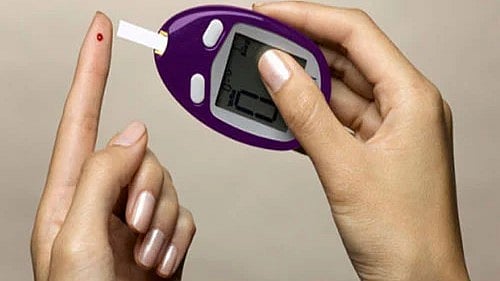
A representative image.
Credit: Reuters Photo
Chennai: Researchers with the prestigious Indian Institute of Technology Madras (IIT-M) have developed and patented a cost-effective, user-friendly, and minimally invasive glucose monitoring device for diabetes patients, encouraging them to check their levels more regularly and take timely action.
This patented device spares patients the discomfort of multiple finger pricks a day, thereby making glucose monitoring painless, and boosts the country’s self-reliance in medical technology and reducing dependence on imported devices. According to a 2023 study by the Indian Council of Medical Research – India Diabetes (ICMR INDIAB), about 10.1 crore people or approximately 9 per cent of the Indian population have diabetes.
The most common method in use, Self-Monitoring of Blood Glucose (SMBG), requires finger-prick blood sampling multiple times a day, which is effective, but invasive.
Continuous Glucose Monitoring (CGM) systems represent an advance over SMBG, offering real-time readings without repeated finger pricks. However, the current generation of CGMs comes with their own set of limitations such as high cost, dependence on separate devices such as smartphones or dedicated readers to display results.
Researchers from the Electronic Materials and Thin Films Lab led by Prof. Parasuraman Swaminathan, developed a set of innovations that together redefine a CGM device.
“A device like this is a real enabler. By making glucose monitoring painless, discreet, and affordable, it encourages people to check their levels more regularly, understand their body’s patterns, and take timely action. Over time, it leads to fewer emergencies, fewer hospital visits and less strain on families and healthcare systems,” L Balamurugan, an IIT Madras MS Entrepreneurship scholar working on this solution, said.
From the outset, this project was conceived not just as an academic exercise but as a technology with a clear path to real-world use, the IIT-M said, adding that researchers are in active discussions with established medical device manufacturers to license the technology.
Functional prototypes of the display module have been built and tested in the lab, while bench tests have confirmed sensing accuracy, signal stability, and the viability of the low-power integrated display. Next steps include clinical validation, manufacturing readiness, regulatory clearance and testing for reliability in real-world conditions, the IIT-M added.